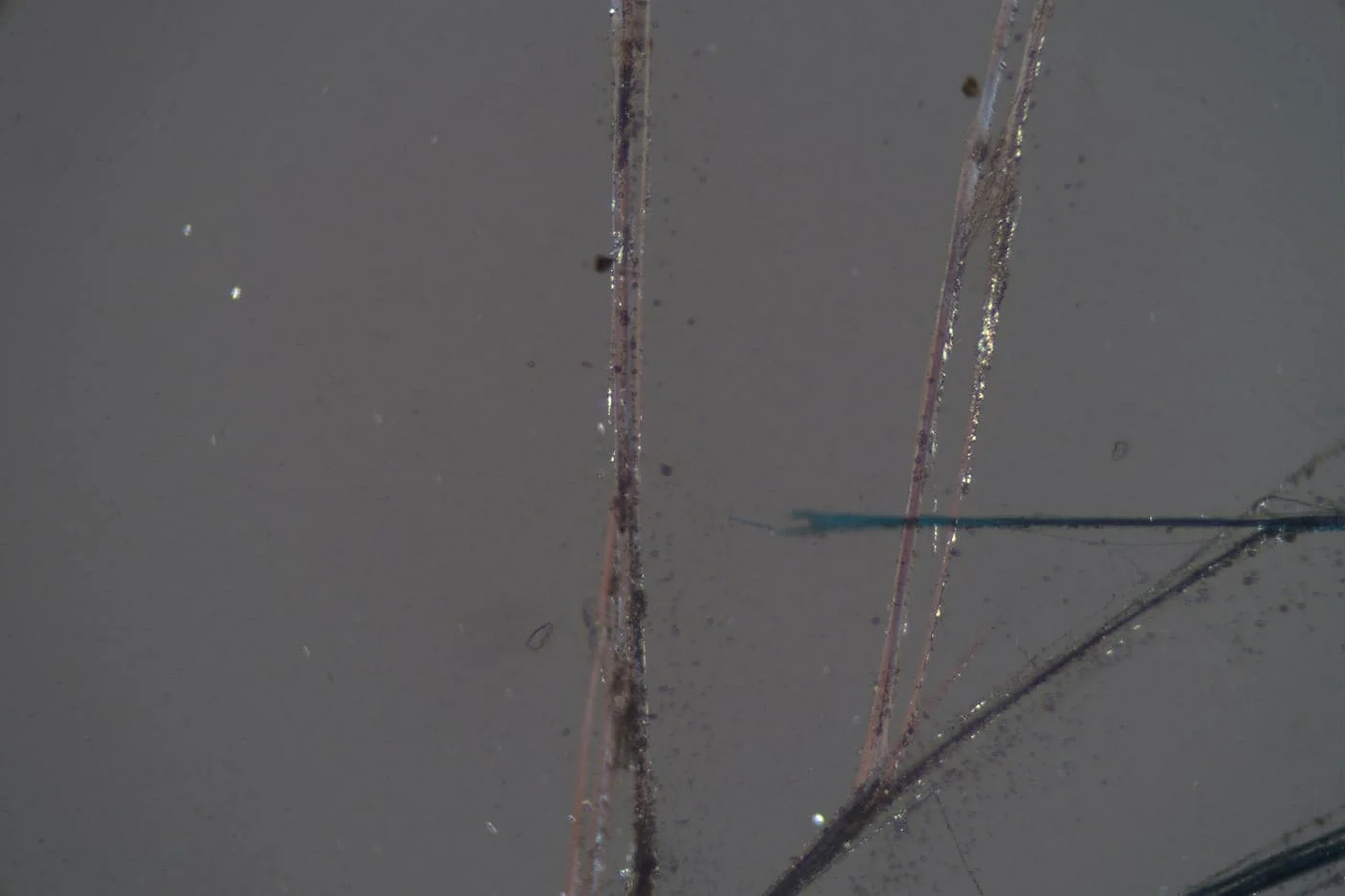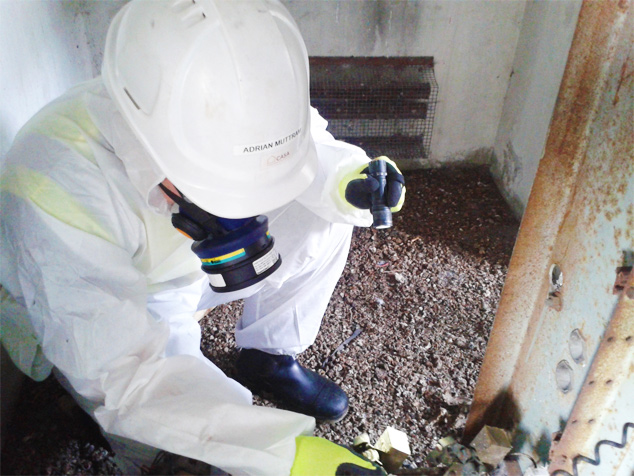Asbestos Testing: In-depth Evaluations to Ensure Full Safety
Asbestos Testing: In-depth Evaluations to Ensure Full Safety
Blog Article
The Total Refine of Accredited Asbestos Checking to Ensure Building Compliance
In the realm of building management and conformity, the procedure of accredited asbestos testing stands as a crucial component to guarantee the safety and wellness of passengers. Recognizing the elaborate actions included in this testing method is critical for home owners and supervisors alike. From the first analysis to the final interpretation of results, each stage plays an essential function in determining the existence of asbestos within a property. Let's check out how this precise process unravels to ensure adherence to rigorous laws and secure against potential carcinogen.
Accredited Asbestos Testing: Preliminary Evaluation
In conducting the preliminary assessment for certified asbestos screening, a thorough exam of the residential property's materials is important to accurately determine potential asbestos-containing materials. This crucial action involves visually inspecting all areas of the residential property, consisting of ceilings, walls, floor covering, insulation, and various other building products that might harbor asbestos. Special attention is provided to products that are prone to damage or disruption, as these scenarios can launch hazardous asbestos fibers into the air. Furthermore, sampling of suspected materials may be essential to validate the existence of asbestos via lab evaluation.
Certified asbestos assessors comply with strict methods established by governing bodies to make sure the precision and dependability of the screening process. By meticulously documenting searchings for and utilizing advanced testing methods, assessors can offer residential or commercial property owners with a comprehensive record detailing the existence of asbestos, if any type of, and the suggested actions for mitigation or removal. This preliminary assessment sets the structure for subsequent actions to address asbestos worries and guarantee the safety and security and conformity of the residential or commercial property.
Example Collection Procedures for Asbestos Evaluating
Effective example collection procedures are important in making sure exact asbestos screening outcomes and compliance with regulative criteria. When collecting examples for asbestos testing, it is crucial to follow rigorous procedures to minimize the threat of contamination and make certain the reliability of the results.
First of all, it is essential to recognize the believed asbestos-containing materials (ACMs) and prioritize tasting locations based on variables such as the product's condition, access, and capacity for disturbance. Asbestos Testing. Examples must be gathered from various areas within the residential or commercial property to give a comprehensive assessment of asbestos presence
During sample collection, licensed experts need to put on suitable personal safety devices (PPE) to safeguard against asbestos exposure. They must use clean tools, such as non reusable handwear covers and plastic sheet, to avoid cross-contamination between samples. Examples should be meticulously collected utilizing a specified technique, such as damp wiping or coring, and securely secured in closed containers to maintain their honesty throughout transport to the research laboratory for evaluation.
Research Laboratory Analysis Refine for Asbestos Samples
Upon completion of the sample collection process, the asbestos samples are meticulously carried to accredited labs for careful analysis. The first action in the research laboratory analysis process is example preparation, where the accumulated examples are meticulously refined over at this website to remove the asbestos fibers.

When the analysis is total, a thorough record is generated, describing the findings and validating whether asbestos exists, the type of asbestos fibers recognized, and the focus degrees. This details is important for building owners to take the essential steps to make certain compliance with asbestos regulations and guard the wellness of passengers.

Reporting and Interpretation of Asbestos Test Results
Certified asbestos screening labs supply in-depth records that supply vital insights right into the existence, kind, and concentration degrees of asbestos fibers located in samples gathered from residential or commercial properties. These records are vital for residential or commercial property owners and managers to understand the danger postured by asbestos and make informed choices concerning its monitoring or elimination. The records generally include information on the techniques used for testing, the locations from which examples were taken, the sort of asbestos identified (such as chrysotile, amosite, or crocidolite), and the concentration levels of asbestos fibers detected.
Translating these outcomes needs know-how to analyze the possible wellness threats associated with asbestos direct exposure, figure out the suitable program of you could look here activity, and guarantee regulatory conformity (Asbestos Testing). Depending upon the findings, referrals may range from proceeded tracking and maintenance to encapsulation or total asbestos abatement. Residential or commercial property proprietors need to carefully evaluate these records and talk to asbestos professionals to create a comprehensive prepare for dealing with any asbestos concerns determined
Ensuring Property Compliance With Asbestos Regulations
To keep adherence with asbestos guidelines, home proprietors should faithfully read the full info here implement actions to make certain conformity with relevant laws and standards. This consists of carrying out routine asbestos evaluations by approved professionals to recognize any type of presence of asbestos-containing materials within the property. Once asbestos is recognized, homeowner have to follow asbestos management prepares that outline appropriate control, removal, or encapsulation treatments to stop exposure and spread of asbestos fibers. Conformity likewise entails keeping detailed records of asbestos testing, upkeep, and elimination activities for assessment purposes.
Homeowner need to give asbestos awareness training to staff members and occupants to reduce the threat of asbestos direct exposure and make certain appropriate handling of products that may have asbestos. Additionally, it is important to stay informed regarding any kind of updates or adjustments in asbestos laws to change monitoring practices accordingly. By proactively addressing asbestos conformity needs, residential or commercial property owners can develop a risk-free atmosphere for owners and alleviate prospective lawful and health and wellness risks related to asbestos exposure.
Final Thought
To conclude, certified asbestos screening is an essential procedure for making certain property conformity with policies. The initial evaluation, sample collection procedures, lab analysis, and analysis of outcomes are very important actions in this process. By following these procedures, residential property owners can recognize and address any kind of asbestos risks existing, protecting the health and safety and security of passengers and preserving compliance with governing demands.
Report this page